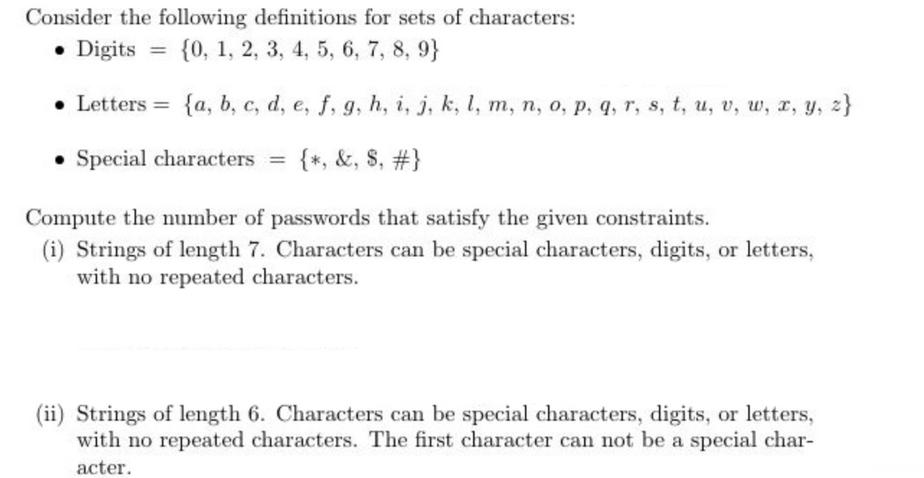Question
Consider the following definitions for sets of characters: Digits == {0, 1, 2, 3, 4, 5, 6, 7, 8, 9} Letters = {a, b,

Consider the following definitions for sets of characters: Digits == {0, 1, 2, 3, 4, 5, 6, 7, 8, 9} Letters = {a, b, c, d, e, f, g, h, i, j, k, l, m, n, o, p, q, r, s, t, u, v, w, x, y, z} Special characters = {*, &, 8, #} Compute the number of passwords that satisfy the given constraints. (i) Strings of length 7. Characters can be special characters, digits, or letters, with no repeated characters. (ii) Strings of length 6. Characters can be special characters, digits, or letters, with no repeated characters. The first character can not be a special char- acter.
Step by Step Solution
There are 3 Steps involved in it
Step: 1

Get Instant Access to Expert-Tailored Solutions
See step-by-step solutions with expert insights and AI powered tools for academic success
Step: 2

Step: 3

Ace Your Homework with AI
Get the answers you need in no time with our AI-driven, step-by-step assistance
Get StartedRecommended Textbook for
Introduction To Software Engineering
Authors: Ronald J. Leach
2nd Edition
1498705278, 9781498705271
Students also viewed these Business Communication questions
Question
Answered: 1 week ago
Question
Answered: 1 week ago
Question
Answered: 1 week ago
Question
Answered: 1 week ago
Question
Answered: 1 week ago
Question
Answered: 1 week ago
Question
Answered: 1 week ago
Question
Answered: 1 week ago
Question
Answered: 1 week ago
Question
Answered: 1 week ago
Question
Answered: 1 week ago
Question
Answered: 1 week ago
Question
Answered: 1 week ago
Question
Answered: 1 week ago
Question
Answered: 1 week ago
Question
Answered: 1 week ago
Question
Answered: 1 week ago
Question
Answered: 1 week ago
Question
Answered: 1 week ago
Question
Answered: 1 week ago
Question
Answered: 1 week ago
Question
Answered: 1 week ago
View Answer in SolutionInn App



